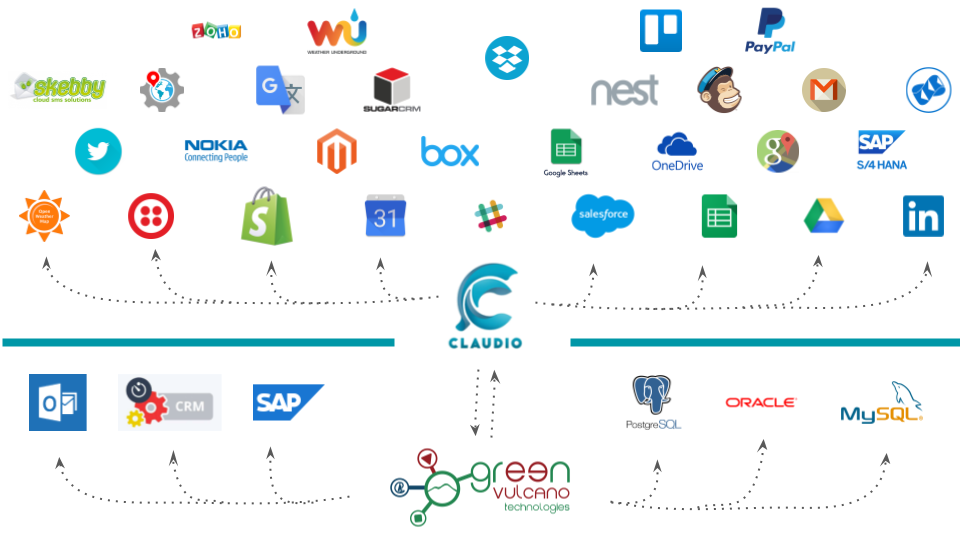What makes Claudio unique?

When we were thinking about the idea to realize a new and unique automation tool, we had to consider both technical and market aspects.
About technical aspects, things were pretty much already decided for us. Our experience was, and still is, in software integration. Our ESB product called GreenVulcano is an integration software used by medium and large enterprises to let systems, talking different languages, to communicate to each other. You can see a bit of what GreenVulcano ESB is and does here (http://www.greenvulcanotechnologies.com). With Claudio, we wanted to continue along this line, helping Enterprises to integrate their company’s services. In the case of enterprise integration, all company data (users, customers, employers information) live and are protected inside the Local area, out of the reach of the internet. But we had also to consider that many companies were moving many services and data out of the company’s walls, to be available directly on the Web. Another aspect we did considered was to make a tool for non technical people.
About market aspects, at the end of our analysis, it turned out that our initial intuition was correct all along. One important constraint to consider was, of course, represented by competitors. Software automation has a long history, but lately under the pressure of recent innovations in the computer area (cloud services, SaaS, open API to name fews), services were becoming globally available and easily integrable. Automation tools, for non technical people, in this market area started to appear, but they are focusing on services available on the Web and cannot easily interact with services or data inside your company.
The vision:
Realize a tool, easy to use by non technical people, to seamlessly coordinate internet services and data and local services and data.
To implement this vision, Claudio has a hybrid architecture made of two complementary parts: one that lives on the internet to connect all cloud application and services and a second one that lives in your intranet and integrates local services, where your valuable data resides. Since local services and local data may reside also within legacy systems (old SAP or CRM instances, DBs, files, etc.), we decided to leverage on our full featured GreenVulcano ESB to do this job.